Light anti-tank weapons of the Afghan dushmans
During the Afghan war, the Soviet army used Tanks T-55 and T-62, infantry fighting vehicles BMP-1/2, armored personnel carriers BTR-60/70/80, patrol reconnaissance vehicles BDRM-2 and multi-purpose lightly armored tractors MT-LB. Airborne combat vehicles BMD-1 and armored personnel carriers BTR-D were used to a limited extent at the initial stage of hostilities and were withdrawn from Afghanistan due to their very high vulnerability to mine-explosive damage and insufficient protection against shelling with large-caliber armor-piercing bullets. In just ten years of the presence of a "limited contingent" in Afghanistan, 147 tanks were irretrievably lost during the fighting. Another 1 vehicles required major repairs. For non-combat reasons, 173 tanks were lost.
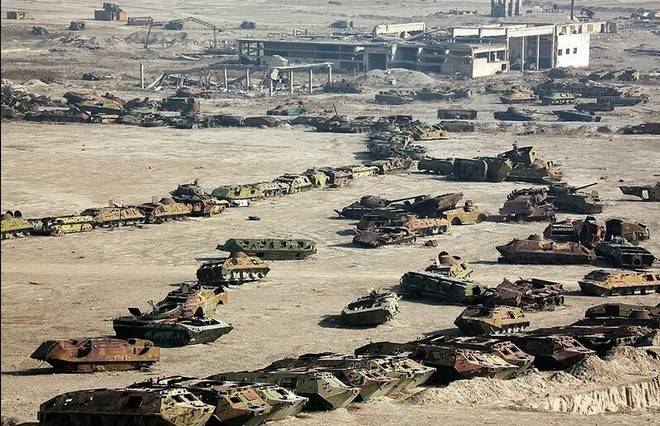
Losses in light armored vehicles are much greater - 1 units. Engineering vehicles for various reasons lost 314 units. Soviet troops irretrievably lost 510 mobile radio stations of medium and high power and command and staff vehicles. The largest losses were in flatbed cars and fuel trucks - 433 units.
Unfortunately, it was not possible to find reliable data on the losses of self-propelled artillery. In particular, it is reliably known that ZSU-23-4 Shilka modified for firing at ground targets were used to escort the columns. The 120-mm self-propelled guns "Nona", the 122-mm self-propelled guns "Gvozdika", the 152-mm self-propelled guns "Acacia" and "Hyacinth" also participated in the hostilities.
The armed forces of the DRA had losses comparable to the Soviet contingent. So, tanks T-34-85, T-54, T-55, T-62 in the fighting by February 1989, more than 200 units were lost. However, Afghan crews often abandoned completely repairable vehicles that received minor damage.
The main damage to tracked and wheeled vehicles in Afghanistan was caused by mines and land mines. About 80% of the lost Soviet armored vehicles were blown up on foreign-made mines and handicraft land mines. But the specialized means of combating armored targets that the dushmans had: hand-held and mounted anti-tank grenade launchers, as well as recoilless rifles sometimes inflicted serious losses, especially on lightly armored vehicles. The rebels used anti-tank guided missile systems very limitedly.
For infantry fighting vehicles and armored personnel carriers, shelling from 12,7–14,5 mm machine gun mounts was a great danger. Also, cases of penetration of the side armor of armored personnel carriers by rifle bullets were repeatedly recorded.
To increase protection against armor-piercing bullets, additional armor screens were installed on the sides of the BMP-2, after which the ability to swim was lost. But in mountainous desert conditions it did not matter. The sides of armored personnel carriers were also sometimes reinforced with improvised screens, in addition, the crews often placed various accessories outside and mounted boxes of rubble on the sides, which also served as additional protection.
As of the late 1980s, the command of the 40th Army in Afghanistan had about 500 medium tanks T-55M and T-62M. The main goal of the modernization was to increase the anti-mine resistance of tanks and install screens that protected against cumulative grenades. During the hostilities, there were practically no cases of Soviet T-55 and T-62 tanks hit by cumulative grenades in the frontal projection.
It turned out to be very difficult to use medium tanks in a country with a mountainous terrain. Attempts to attract them to accompany the columns did not justify themselves. The movement of tracked vehicles weighing 36-40 tons on mountain roads was associated with great difficulties. At the same time, fuel consumption was many times greater than that of wheeled armored personnel carriers and much lighter infantry fighting vehicles. In addition, the relatively small resource of the undercarriage and engines of the tanks was wasted, and the elevation angle of the tank gun was often not enough to fire at the rebels who had settled on the steep mountain slopes. In this regard, tanks were mainly used in the valleys to protect important objects, reinforce roadblocks and fire support for infantry during major military operations.
Hand anti-tank grenades
At first, the detachments of the armed Afghan opposition had very few special anti-tank weapons. The source of their income at first was the arsenals of the Afghan army. anti-tank weapon captured in battle or brought by deserters.
The Afghan infantry, along with fragmentation offensive and defensive grenades, had RKG-3E hand-held anti-tank grenades, and some of these anti-tank grenades were at the disposal of the rebels.
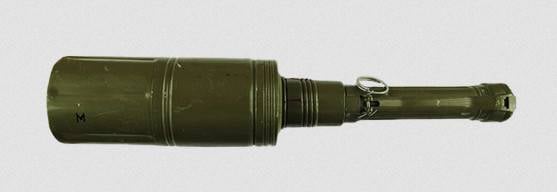
After the start of large-scale deliveries of weapons and ammunition from the PRC, Chinese Type 3 and Type 80 hand-held cumulative grenades appeared in the arsenals of dushmans.
The Type 3 grenade was a copy of the RKG-3E. The total length of the Type 3 grenade was 352 mm, diameter - 70 mm, weight - 1 g. The warhead weighing 100 g was equipped with TNT. A well-trained fighter is able to throw it at 435–15 m. When meeting a target at an angle of 20 ° from the normal, a cumulative warhead could penetrate 30-mm homogeneous armor.
The body of the Type 80 grenade was made of light alloy, and in the combat position it weighed 1 g. The warhead equipped with an alloy of TNT and RDX, when meeting at a right angle, pierced 000-mm homogeneous armor. Physically strong soldiers could throw a Type 250 grenade at 80m.

However, as is the case with other Soviet and Chinese-made anti-tank hand grenades, it was relatively safe to use the Type 80 grenade only from cover. Otherwise, the grenade launcher had practically no chance to survive.
Hand anti-tank grenade launchers
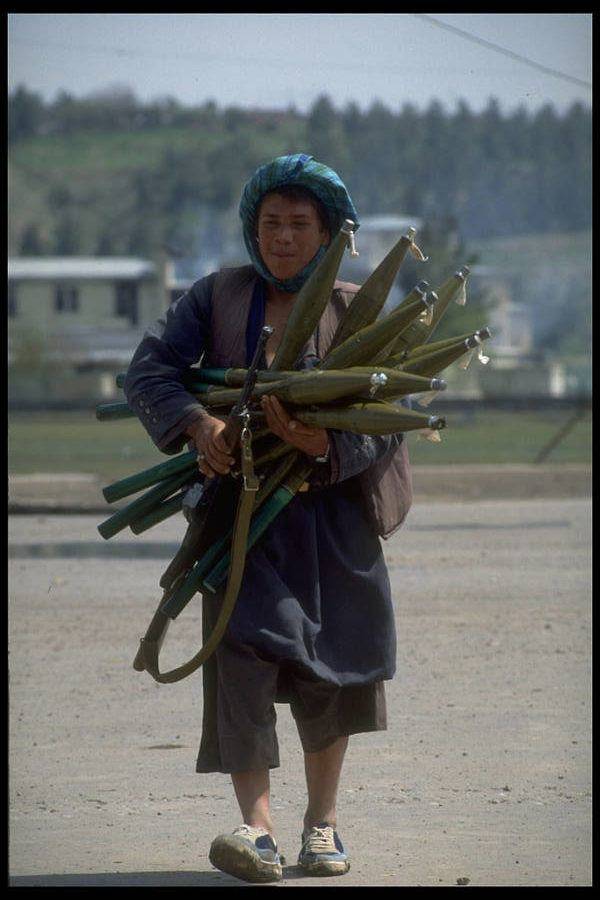
In the late 1970s, the Afghan army had Soviet-made RPG-2 and RPG-7 hand-held anti-tank grenade launchers. Some of them were captured by dushmans, in addition, clones of Soviet grenade launchers were produced in China, Pakistan and Iran.
The RPG-2 grenade launcher entered service with the Soviet Army in 1949. It had a simple design and had high performance for that time. When creating the RPG-2, technical solutions were laid down, which later became basic when creating more advanced models.

The RPG-2 grenade launcher weighed 4,67 kg in combat position and had a length of 1 mm. The range of a direct shot was 200 m, the aiming range was 100 m. Aiming was carried out using open devices. For firing at armored vehicles, an 150-mm PG-80 over-caliber grenade weighing 2 kg was used. After the bottom fuse is triggered, the cumulative warhead, containing 1,85 g of TNT, is capable of penetrating 220-mm armor along the normal. A cardboard sleeve filled with black gunpowder was attached to the PG-200 grenade using a threaded connection before firing. The grenade was stabilized in flight by six flexible steel feathers, rolled around the tube and unfolding after leaving the barrel.
The main disadvantage of the PG-2 grenade was the use of black powder as a propellant charge. When fired, a clearly visible cloud of thick white smoke formed, and cardboard shells swelled at high humidity and did not fit into the barrel, and the powder charge itself, having become damp, became unsuitable for firing. Due to the low initial speed of the cumulative grenade (85 m / s), it is subject to strong wind drift along the trajectory. Only a well-trained grenade launcher could get into a tank with a side wind of more than 10 m / s at a distance of 100 meters.
In general, the RPG-2 in the 1950s and 1960s was a completely effective anti-tank weapon capable of successfully fighting tanks of the first post-war generation. Even now, the cumulative PG-2 grenade poses a great danger to modern lightly armored vehicles.
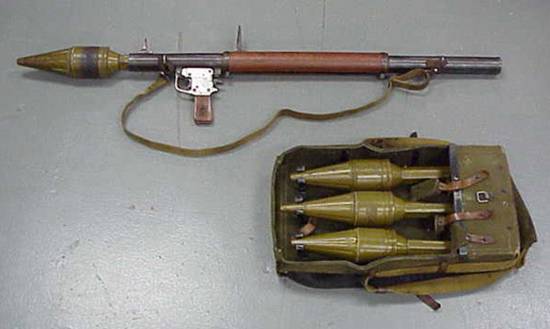
In the second half of the 1950s, the production of RPG-56 and PG-2 grenades began in China under the designation Type 2. Production of Type 56 grenade launchers continued until the early 1970s. A significant part of them was exported, and in terms of the number of issued copies, China significantly surpassed the Soviet Union.
In the late 1960s, the protection of Western and Soviet tanks increased markedly. In this regard, the PRC has launched the production of its own cumulative grenade, capable of penetrating armor 300 mm thick. Since, during local conflicts, anti-tank grenade launchers were very often used against manpower and field fortifications, a grenade with a fragmentation jacket was created in China.
Although already in the 1970s, the Type 56 could no longer be considered modern, until 1985, more than 2 of these grenade launchers were transferred from the PRC to the Afghan armed opposition.
Thanks to large-scale financial assistance from Western countries and Arab monarchies, Afghan rebel detachments constantly increased their anti-tank arsenals. In 1984, the norm was the presence of one RPG for ten people, a recoilless rifle and 2-3 anti-tank grenade launchers for a group of 25 people, and five recoilless rifles and a dozen hand grenade launchers relied on a formation of a hundred fighters.
The rebels managed to capture a number of Soviet-made RPG-7 grenade launchers. The Americans also organized the transfer of RPG-7 and cumulative rocket-propelled grenades from Egypt to Afghanistan.
The design of the RPG-7 grenade launcher and the PG-7V shot was based on the proven schemes of a reusable recoilless launcher and a shot with an over-caliber warhead. In the middle part of the RPG-7 barrel there is a special charging chamber, which allows more efficient use of the energy of the propellant charge. To dissipate the jet stream when fired, a bell is designed in the breech breech. The RPG-7 hand grenade launcher, in addition to the mechanical sight, was equipped with a 2,7x PGO-7 optical sight.
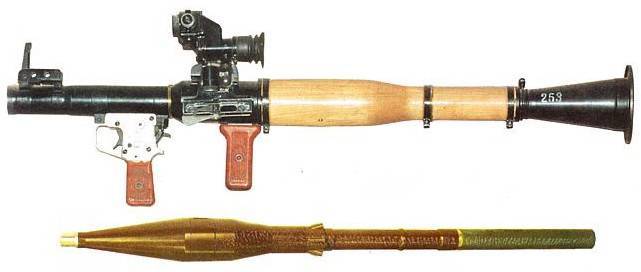
To initiate the cumulative charge of a rocket-propelled grenade, for the first time in our country, a piezoelectric fuse was used for ammunition of this kind. The stabilization of the grenade in the air was carried out by four drop-down blades. In order to increase the accuracy of fire due to the inclination of the stabilizer blades, rotation is transmitted to the grenade at a speed of several tens of revolutions per second.
The over-caliber 85-mm anti-tank grenade PG-7 with a mass of a shot of 2,2 kg could penetrate 260-mm armor. The initial speed of the grenade is about 120 m / s, at the end of the active section it increases to 300 m / s. Due to the relatively high initial speed and the presence of an active section of the jet engine, in comparison with the PG-2, it was possible to significantly increase the accuracy and range of fire. With a direct shot range of 330 m, the aiming range is about 600 m.
The Chinese Type 69, which was created on the basis of the Soviet RPG-7, became a fairly massive anti-tank grenade launcher among the dushmans.
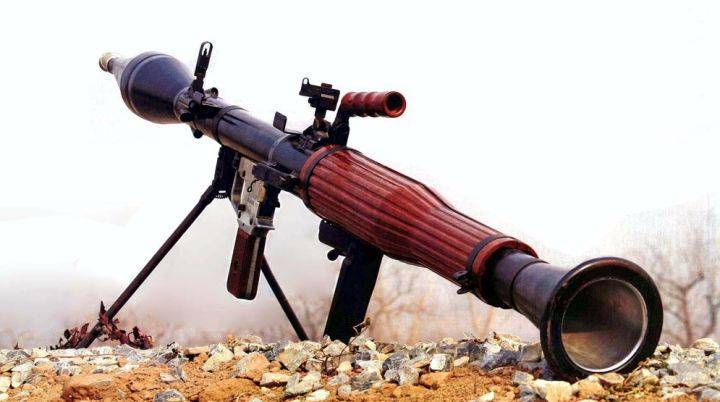
By the time the RPG-7 was adopted, relations between the USSR and the PRC were spoiled, and the license for production was not transferred to China. However, the Chinese comrades were never particularly interested in copyright and licensing rights; the production of their own version of the RPG-7 in the PRC was established on the basis of documentation and full-scale samples purchased in Egypt.
The Type 69 grenade launcher differed from the Soviet RPG-7 in a number of parts and production technology, but in terms of its main characteristics it was similar to the Soviet prototype. The first modification of the Type 69 was equipped with a bipod, mechanical sights and had a single handle.
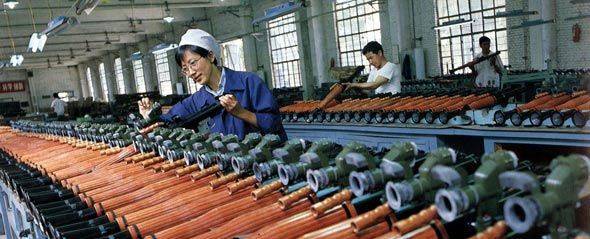
In the late 1970s, the Type 69-I grenade launcher with an optical sight and a cumulative grenade capable of penetrating 200 mm armor when hit at an angle of 65 ° entered service with the PLA.
According to the memoirs of the combatants in Afghanistan, the Chinese Type 69 grenade launcher was somewhat lighter than the domestic RPG-7, but lost a little to it in the range of aimed fire.
Our servicemen very successfully used RPG-16 Udar anti-tank grenade launchers in Afghanistan. The uniqueness of this sample, created specifically for the Airborne Forces, was that it used a caliber 58,3-mm PG-16 cumulative grenade, and the grenade launcher itself could be disassembled into two parts.
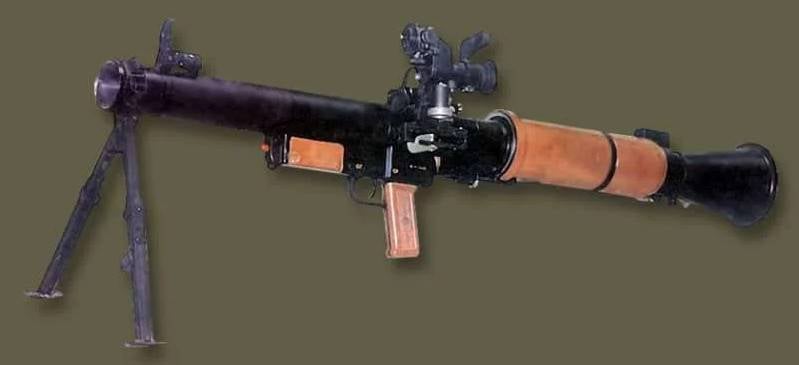
Due to the high initial and cruising speed of the PG-16 rocket-propelled grenade, the range of a direct shot and accuracy have significantly increased. The circular probable deviation at a distance of 300 m was approximately 1,5 times less than that of the PG-7V. The range of a direct shot was 520 m. At the same time, despite the relatively small caliber - 58,3 mm, the PG-16 grenade, due to the use of a more powerful explosive in combination with a copper lining of a cumulative funnel and an accurate selection of the focal length, had an armor penetration of 300 mm. At the same time, compared to the RPG-7, the specially designed airborne grenade launcher was larger and heavier. Its weight was 10,3 kg, and the length when assembled was 1 mm.
A landing caliber grenade launcher with a "loaded" barrel performed well in Afghanistan. Since the accuracy and range of fire were comparable to the distance of an aimed automatic shot, grenade launchers armed with RPG-16s effectively suppressed the rebel firing points. For this reason, even despite the greater weight and dimensions, "sniper grenade launchers" were popular among military personnel of a limited contingent.
It is known that the rebels managed to capture about a dozen RPG-16 grenade launchers. But due to the lack of ammunition, the spooks did not use them for long. In 1983, militants handed over two captured RPG-16s to Pakistani intelligence. How the Pakistanis disposed of them is unknown. In the 1980s, Pakistan maintained close relations with the US and China.
In Afghanistan, our troops massively used reactive anti-tank grenades RPG-18 "Fly" and RPG-22 "Netto".
Although the RPG-18 and RPG-22 are actually disposable grenade launchers, they were designated "rocket-propelled grenades" - that is, expendable ammunition. This was done in order to facilitate the process of accounting and decommissioning, since it is many times easier and faster to write off an anti-tank grenade used or lost during hostilities or exercises than a grenade launcher.
The smooth-walled “trunk” of the “Fly” is a telescopic sliding structure made of outer and inner pipes. The outer tube, made of fiberglass, protects the shooter from the effects of powder gases during the shot. In the rear upper part of the inner tube, made of high-strength aluminum alloy, there are a trigger mechanism with a blocking device and a grenade primer assembled in one housing. The length of the RPG-18 in the stowed position is 705 mm, in the cocked combat position - 1 mm.

Complete combustion of the starting powder charge occurs in the barrel of a disposable launcher even before the grenade leaves the barrel. Unlike the PG-7 reactive anti-tank grenade, the RPG-18 cumulative grenade flies further only by inertia, without acceleration by a sustainer jet engine. The initial speed of the cumulative grenade is 115 m / s. In flight, the grenade is stabilized by four deployable feather stabilizers. To give the grenade rotation at a speed of 10-12 rpm, the stabilizer blades have a slight slope. A 64 mm RPG-18 grenade, when hit at a right angle, is capable of penetrating 300 mm homogeneous armor.
Sights RPG-18 include a spring-loaded front sight and diopter. The front sight is a transparent glass with applied firing ranges of 50, 100, 150 and 200 meters. At a distance of 150 m, in the absence of a side wind, half of the grenades fit into a circle with a diameter of 1,8 m.
The RPG-22 rocket-propelled anti-tank grenade is a further development of the RPG-18 with a caliber increased from 64 to 73 mm. The larger and heavier cumulative grenade was equipped with a large volume of explosives, which, in turn, increased armor penetration. When hit at a right angle, a cumulative warhead could penetrate 400 mm homogeneous armor, and at an angle of 60 ° from the normal - 200 mm.
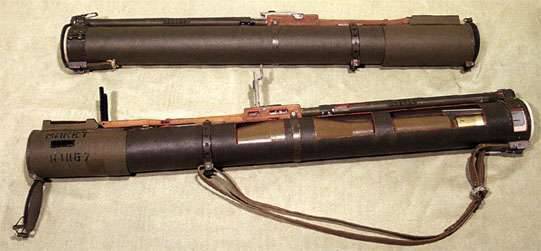
The new formulation of the propellant charge made it possible to increase the muzzle velocity of the projectile to 130 m/s, while shortening the barrel length. In turn, the range of a direct shot reached 160 m, and the aiming range of fire increased to 250 meters. The modified trigger mechanism has the ability to re-cock in the event of a misfire. The length of the RPG-22 in combat position was reduced to 850 mm, which made handling more convenient. At the same time, the mass of the RPG-22 became the most by 100 g.
Since there were no armored vehicles and rebels, our soldiers actively used the RPG-18 and RPG-22, as well as disposable rocket-propelled flamethrowers, to destroy manpower and suppress enemy firing points.
Due to the inevitable vicissitudes of the war, a certain number of RPG-18 and RPG-22 disposable rocket-propelled grenades fell into the hands of spooks.
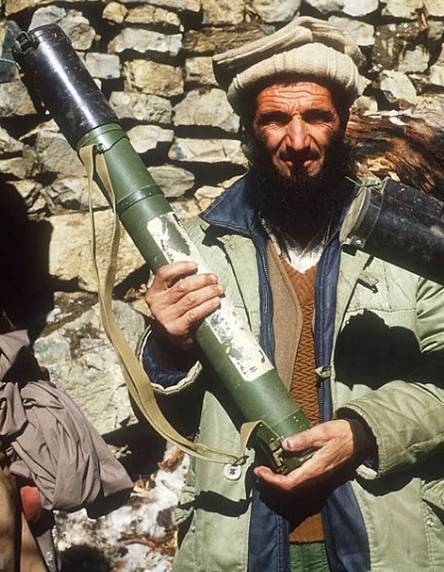
It was not difficult to master shooting from RPG-18 and RPG-22. This process was facilitated by the fact that instructions for use are printed on the surface of the outer tube.
In addition to Soviet and Chinese-made grenade launchers, the rebels had at their disposal American 66-mm M72 LAW disposable grenade launchers.
According to their characteristics, the RPG-18 and M72 LAW were close. The Soviet sample with a smaller caliber is 150 g heavier. At a higher initial speed - 140 m / s. The effective firing range of the M72 LAW is the same - 200 m. The length of the American grenade launcher in combat position is 880 mm, when folded - 670 mm. The armor penetration of the M72 LAW cumulative grenade containing 300 g of octol is about 330 mm, which is quite enough to destroy the side armor of the T-62 tank not covered by an additional screen.
Features of the use of hand-held anti-tank grenade launchers by dushmans
The use of hand-held anti-tank grenade launchers allowed armed opposition units to increase their firepower in close combat. Captured grenade launchers captured from Soviet and Afghan government troops, as well as Chinese Type 56 and Type 69, in close combat compensated for the lack of artillery support from the dushmans. Since hand-held anti-tank grenade launchers are quite easy to use, they could quickly be mastered by former farmers who did not have special military training.
Typically, a grenade launcher crew consisted of a shooter and 1–2 ammunition carriers. Often, a grenade launcher in the zone of action of his group had a bookmark, where an additional supply of grenades was placed. The grenade launcher and his assistants carried a portable ammunition load of 4-6 shots. One of the grenades was necessarily in the barrel of a grenade launcher.
The Mujahideen, armed with hand grenade launchers, often showed great skill in firing them, showing how effective an anti-tank grenade launcher can be in close combat. The rebels' grenade launchers did not experience a shortage of ammunition and often fired not only at armored targets and vehicles, but also at infantry units and even individual soldiers moving in open areas, firing up to 4-5 rounds per minute.
During the fighting, the rebels developed a special tactic for using RPGs. To increase the probability of hitting a target, multiple launch rocket launchers and concentrated fire on one target were practiced. From rocket-propelled grenade launchers, flying and hovering helicopters were often fired upon. Mounted firing was carried out at the enemy, located on the reverse slopes of heights, in ravines and behind obstacles, over shelters on mountain slopes in order to destroy manpower with fragments and rockfall.
Sometimes dushmans fired at the positions of Soviet troops from a distance that increased the maximum firing range, with self-destruction of a grenade in the air. Such shelling in most cases was of a harassing nature, but when detonated at a height of 15–20 m, fragments could hit personnel on the ground. The height of the grenade burst in the air depends on the response time of the self-liquidator. In Chinese-made rocket-propelled grenades, when firing at an angle of 35–45 °, it was 800–900 m. At this range, it is very difficult to notice a grenade launcher hiding among the stones.
Продолжение следует ...
- Linnik Sergey
- Weapons of the Afghan dushmans. Revolvers, pistols and submachine guns
Weapons of the Afghan dushmans. Shotguns, single-shot and repeating rifles
Weapons of the Afghan dushmans. Self-loading rifles and assault rifles
Weapons of the Afghan dushmans. Hand, easel and uniform machine guns
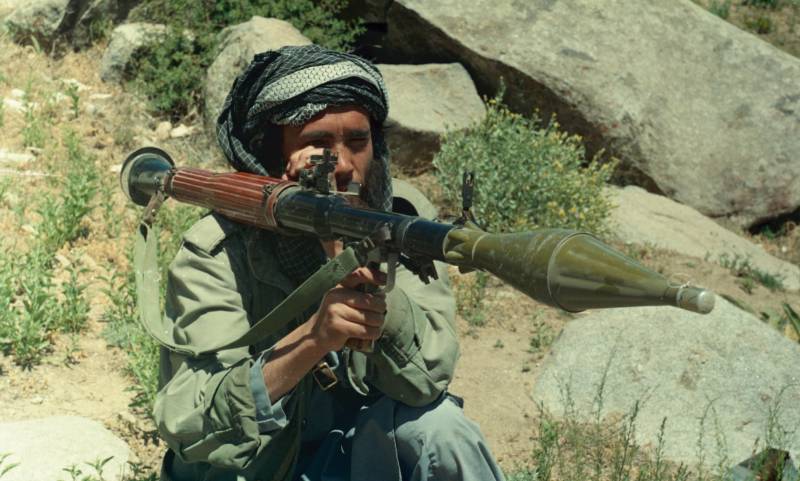
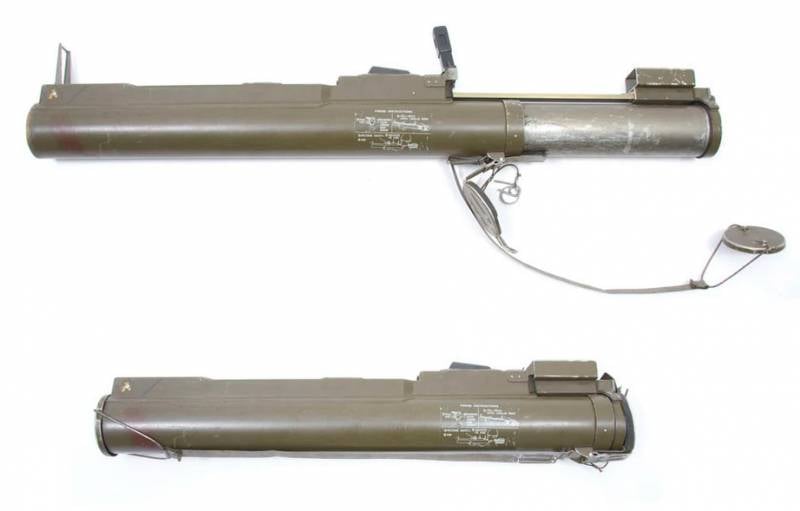
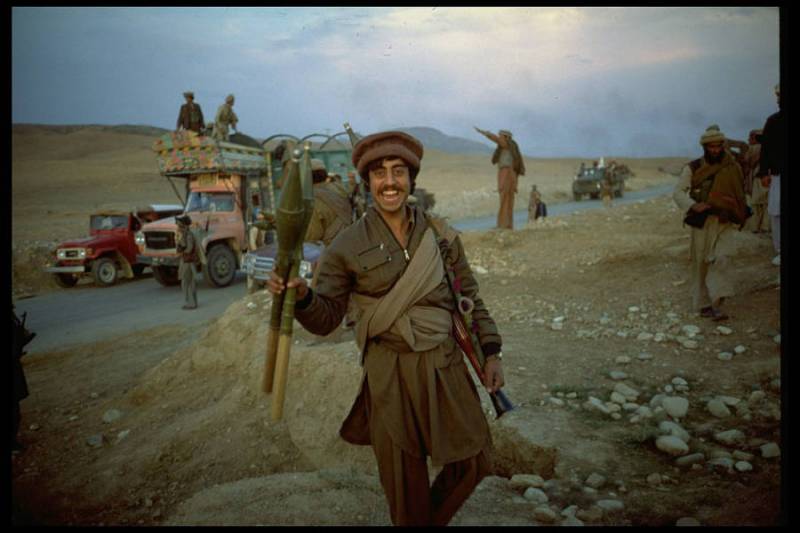
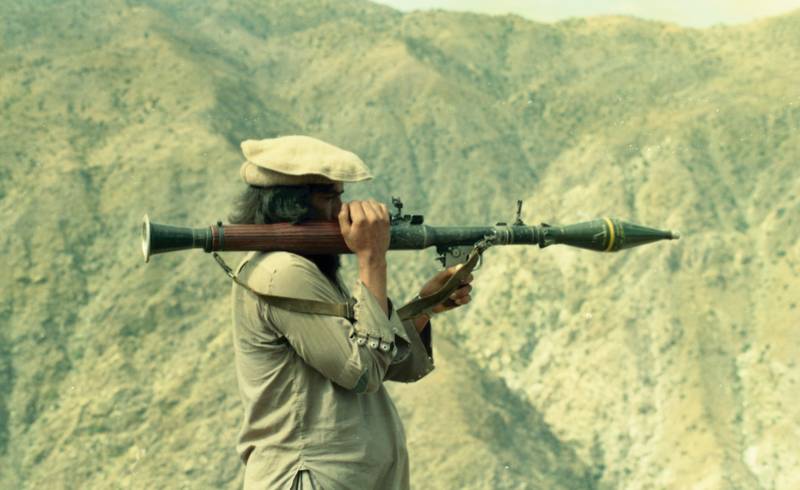
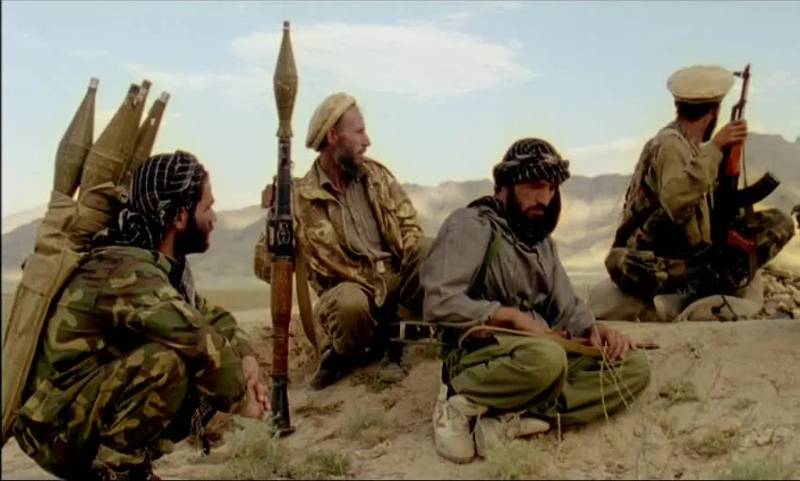
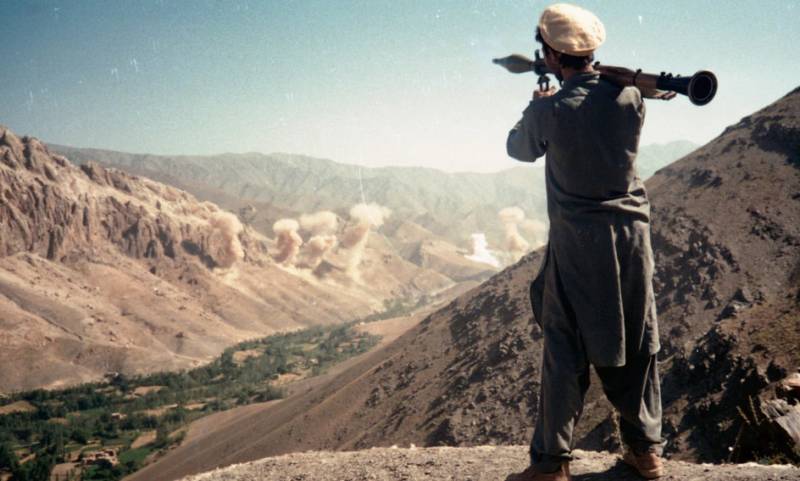
Information